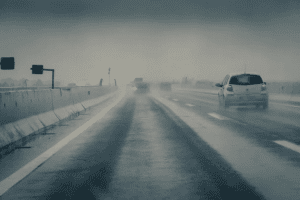Orange County, known for its beaches and sunshine, has its share of hazardous roads. Every year, countless drivers face risks on these routes. Being informed about these roads can make a difference for locals and visitors alike.
At Marcereau Law Group, we are familiar with the most dangerous intersections in the region. If you have a car crash at a dangerous intersection in Orange County, an experienced car accident attorney from our team is here to help you.
Learn more about dangerous Orange County intersections below. Then, call us to schedule a case consultation.
UNDERSTANDING THE CRITERIA FOR DANGEROUS ROADS
When we talk about “dangerous roads,” we don’t just mean roads that look scary. Instead, they’re roads that have higher car accident rates. These roads may have design flaws, heavy traffic, or other issues making them riskier. Knowing about these issues helps drivers to stay alert and prepared.
Factors Contributing to Road Danger
There are numerous factors that can elevate a road’s danger level. Some of the primary factors include:
- Traffic Congestion
Traffic buildup often leads to frustration and rash decisions. When too many cars are on the road, the chances of an accident increase. Impatient drivers might make risky maneuvers, endangering themselves and others. This could lead to truck accidents.
- Weather Conditions
Rain, fog, and other weather conditions can obscure visibility. Slippery roads from rain or ice can cause vehicles to skid. In Orange County, occasional heavy rainfalls can catch drivers off guard, making roads treacherous. These make motorcycle accidents more likely as well.
- Geographical Features
Mountains, cliffs, and coastlines can influence road design. Roads may have sharp turns, steep inclines, or sudden drops. Drivers unfamiliar with these features might misjudge them, leading to accidents.
- Accident History
Some roads have a long history of accidents. Whether due to poor design, frequent traffic, or other factors, these roads demand extra caution. Avoiding distractions and obeying speed limits becomes even more crucial.
Safety Measures and Road Design
Safety is paramount when designing or modifying roads. Proper design can reduce the chances of accidents. Good roads have clear signs, ample lanes, and smooth surfaces to help drivers navigate safely.
PACIFIC COAST HIGHWAY (PCH)
The Pacific Coast Highway, often called PCH, stretches along California’s stunning coastline. It’s a favored route for scenic drives. However, there’s more to it than meets the eye.
- Introduction to PCH
The PCH is one of the most iconic highways in California. It offers breathtaking views of the Pacific Ocean. However, with its beauty comes a level of risk. The road often winds close to cliffs, demanding attention and caution from drivers.
- Notable Accidents and Challenges
The PCH has seen numerous accidents over the years. One news outlet alleges that 400 fatalities happen regularly on this stretch. Many occur because drivers are distracted by the views. Additionally, sudden stops for sightseeing or wildlife crossings can catch trailing drivers off guard.
- Efforts To Improve Safety
Safety measures have been introduced to reduce risks. These include clearer signage, guardrails, and designated viewing spots. By staying informed and following guidelines, drivers can enjoy the PCH safely.
- Tips for Safe Driving on PCH
When on the PCH, always stay alert. Keep an eye out for pedestrians, cyclists, and wildlife. Avoid stopping abruptly for views, and use designated areas. Remember, the road is shared; always be considerate of other drivers.
ORTEGA HIGHWAY (SR-74)
Winding through the mountains, Ortega Highway or SR-74 is a challenging route. While beautiful, it poses significant risks, especially to unfamiliar drivers.
- Introduction to Ortega Highway
The Ortega Highway cuts through the Santa Ana Mountains. It’s a popular route for those seeking a scenic drive. However, its mountainous terrain and winding roads demand careful navigation.
- Hazardous Sections and Accident Statistics
Certain stretches of the highway are particularly treacherous. Sharp curves and sudden elevation changes contribute to many accidents. Data shows that the Ortega Highway has a higher-than-average crash rate.
- Ongoing Safety Initiatives
To address safety concerns, several initiatives have been introduced. These include road widening, barrier installations, and improved signage. The goal is to make the highway safer without compromising its natural beauty.
- Recommended Precautions for Ortega Highway
If you’re driving on the Ortega Highway, stay alert. Avoid speeding and always use turn signals. Be especially cautious during foggy conditions. Remember, safe driving habits can make all the difference.
SANTIAGO CANYON ROAD (SR-241)
Nestled in the heart of Orange County, Santiago Canyon Road, or SR-241, is both beautiful and challenging. Its rural setting offers a serene escape but has its share of hazards.
- Introduction to Santiago Canyon Road
Santiago Canyon Road is known for its rolling hills and open spaces. It’s a favorite among motorcyclists and weekend drivers. However, its winding nature and occasional sharp turns require undivided attention.
- Accidents and Safety Concerns
The road has witnessed multiple accidents, primarily at its curves. Often, drivers misjudge these turns, leading to collisions. In addition, the remote location means that help can sometimes be delayed.
- Improvements and Future Plans
To enhance safety, several projects are underway. These include adding guardrails, improving road markings, and monitoring speed limits. Plans might also involve widening certain sections to reduce congestion. This could cut down on fatal wrongful death accidents.
- Driving Safely on Santiago Canyon Road
When navigating Santiago Canyon Road, keep distractions at bay. Follow speed limits and be wary of sharp turns. Also, always be mindful of motorcyclists who frequently use this route.
LAGUNA CANYON ROAD (SR-133)
Laguna Canyon Road, or SR-133, offers a direct route to the famed Laguna Beach. While convenient, it presents challenges, especially in the winding canyon areas.
- Introduction to Laguna Canyon Road
Laguna Canyon Road is a major arterial road in Orange County. It’s frequented by locals and tourists alike, especially during summer. The road’s design, coupled with its heavy traffic, makes it a hotspot for accidents.
- Dangerous Curves and Accident Data
Several stretches of the road, especially in the canyon areas, have sharp curves. Misjudging these curves has led to numerous accidents. Yearly, the accident rate on Laguna Canyon Road is higher than many other county roads.
- Environmental Impact and Safety Projects
The road’s design considers the surrounding environment. To preserve the canyon’s beauty, certain safety measures are sometimes limited. However, ongoing projects aim to balance safety and environmental preservation.
- Safe Navigation of Laguna Canyon Road
If you’re using Laguna Canyon Road, always be on guard. The mix of heavy traffic, sharp curves, and frequent pedestrian crossings can be challenging. It’s crucial to stay alert, especially during peak hours.
BEACH BOULEVARD
Beach Boulevard, also known as Highway 39, is one of Orange County’s longest roads. It’s a major north-south route connecting several cities. With its length comes diversity – from busy urban stretches to quieter suburban areas.
However, Beach Boulevard’s length also means it sees a lot of traffic. Consequently, there’s a higher likelihood of accidents. Intersections, in particular, can be tricky, with cars, cyclists, and pedestrians often vying for space.
ALICIA PARKWAY
Alicia Parkway is a primary east-west road in southern Orange County. It connects the cities of Laguna Niguel and Mission Viejo. The road, while generally straightforward, has its share of challenges.
Many intersections along Alicia Parkway can become congested, especially during rush hours. It’s crucial to stay patient and wait your turn. Making rash decisions, like running a red light, can have severe consequences.
CROWN VALLEY PARKWAY
Crown Valley Parkway, located in the heart of Orange County, serves as a significant artery. It offers a direct route between the coast and the I-5 freeway. With its convenience, it’s a favorite among many drivers.
However, like any major road, Crown Valley Parkway sees heavy traffic. This traffic can lead to occasional bottlenecks, especially near intersections. It’s crucial to stay alert and be prepared for sudden stops.
EL TORO ROAD
El Toro Road is critical in the Lake Forest and Laguna Hills areas. It serves as a main route to many residential and commercial zones. The road, while busy, is generally well-maintained and straightforward.
Despite its good condition, accidents can still occur. Often, they’re a result of distracted or impatient driving. Focusing on the road and avoiding unnecessary risks can make a huge difference.
BRISTOL STREET
Bristol Street, located in Santa Ana, is one of Orange County’s bustling roads. It connects several commercial zones, making it a hub of activity. With so much going on, drivers need to be extra vigilant.
Intersections along Bristol Street can become particularly busy. With cars, buses, and pedestrians all in the mix, it’s crucial to be patient. Waiting an extra few seconds can prevent potential accidents.
CHAPMAN AVENUE
Chapman Avenue, stretching across several Orange County cities, is a vital road. It provides access to many establishments, from schools to shopping centers. Its central location means it sees a lot of traffic.
Accidents on Chapman Avenue often result from impatience. Whether speeding or not or yielding the right of way, these actions can be dangerous. It’s always best to stay calm and respect traffic rules.
INTERSTATE 5 FREEWAY
The I-5, running through Orange County, is one of California’s primary freeways. As such, it sees immense traffic, from commuters to truckers.
- Overview of the I-5 Freeway in Orange County
The I-5 is a major north-south route connecting multiple states. In Orange County, it’s a primary conduit linking several cities. Given its significance, it’s always bustling, making it essential to stay alert.
- Congestion and Accident Hotspots
The I-5 is notorious for its traffic jams, especially during peak hours. Certain stretches, known as accident hotspots, require extra caution. These areas tend to have a higher frequency of crashes due to congestion or road design.
- Expansion Projects and Safety Enhancements
To address safety concerns, the I-5 is continuously updated. Expansion projects aim to reduce congestion, while safety enhancements focus on reducing accident risks. These might include better signage, guardrails, or lane adjustments.
- Tips for Safer Driving on I-5
If you’re on the I-5, always maintain a safe following distance. Be wary of merging vehicles and stay in your lane. If you’re tired or drowsy, taking a break is best. Your safety, and that of others, is paramount.
KNOW YOUR RIGHTS AND BEWARE OF THE MOST DANGEROUS HIGHWAYS IN CALIFORNIA | CALL MLG PERSONAL INJURY & ACCIDENT LAWYERS TODAY!
Navigating Orange County’s roads can be challenging, but knowledge is power. You can be better prepared by staying informed about the most dangerous roads. After all, safety should always be a driver’s top priority.
At Marcereau Law Group, we would be honored to represent you. Contact us today to schedule a free consultation.






